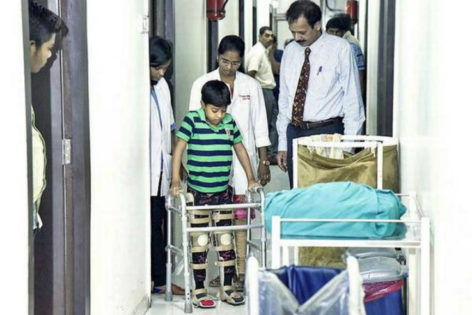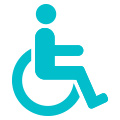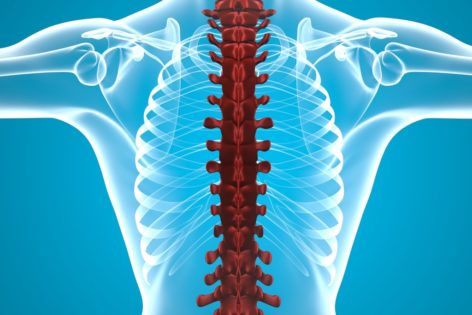
Paralysed Boy Walks Again After Stem Cell Treatment
10/08/2018


288,000 people in the UK are living with a Spinal Cord Injury (SCI)

The lifetime healthcare costs for a serious SCI sustained at 25yrs old is $5 million

Studies report male-to-female ratios of up to 4:1

People with a spinal cord injury are two to five times more likely to die prematurely than people without a spinal cord injury

Spinal cord injury is associated with a risk of developing secondary conditions that can be debilitating
Source: World Health Organisation, National Spinal Cord Injury Statistical Center
Whilst Stem Cell therapy has made great strides in a number of areas, including diabetes, stroke, autism and Parkinson’s, it remains in its infancy with regard to skeletal muscle and spinal cord injuries and conditions.
Skeletal muscle is one of three major muscle types, the other two are cardiac muscle and smooth muscle. A skeletal muscle refers to multiple bundles of cells called muscle fibres, and these fibres are surrounded by connective tissue layers.
Skeletal muscles cover the entire skeleton, giving your body it’s shape. These kinds of muscles are under voluntary control, meaning you consciously control what they do. As a result, muscular injuries of this nature are extremely common amongst athletes. In terms of the function of skeletal muscle in the human body, it produces movement, stabilises joints and generates heat.
The spinal cord is a long, tube-like structure that begins at the end of the brain stem and continues down to almost the bottom of the spine. It consists of nerves, carrying messages between the brain and the rest of the body. A traumatic injury to the spine can cause a bruise, a partial tear, or a complete tear in the spinal cord. The most common sites of injury are the cervical and thoracic areas.
Research into Stem Cell Treatment
Despite the ability of muscle fibres to regenerate, muscle function is often compromised after injury due to the formation of dense fibrotic scar tissue. However, breakthroughs in stem cell research have demonstrated the potential for stem cells to reduce fibrosis.
A recent study from the Stanford University School of Medicine has discovered that stem cells in muscle tissue “police themselves” to reduce fibrosis or the build up of scar tissue. This ability to prevent scarring could promote anti-aging properties by keeping muscles healthy and functional and could also benefit patients with muscle wasting diseases like muscular dystrophy.
At the same time stem cell therapy is rapidly evolving and promising treatment for spinal-cord injuries (SCI). These types of injury result in loss of nervous tissue and consequently loss of motor and sensory function. There is currently no treatment available that restores the injury-induced loss of function. However, evidence is building that the transplantation of stem cells or progenitors may support spinal cord repair. Stem cells are characterized by self-renewal and their ability to become any cell in an organism and promising results have been obtained in experimental models of SCI.
Approximately 230,000 Americans suffer life-changing acute spinal cord injuries each year. These injuries lead to neurological compromise through an inflammatory response and cell death within the spinal cord. But stem cells are considered promising because they are self-renewing human cells that can differentiate into one or more specific cell types. Ideally, treatments for spinal cord injuries would limit existing cell death, stimulate growth from existing cells, and replace injured cells.
As with much of the work in stem cell therapy extensive research and clinical trials continue to take place to find safe and efficacious methods of treatment for future generations.
Protect Their Future Health
If you want more information on how you could bank your children’s baby teeth for potential future therapeutic use, have a chat to one of our team or download our guide to stem cell banking.
For more information on the latest breakthroughs in stem cell therapies and treatments see our news articles.

10/08/2018

06/06/2018